Ligand fitting with CCP4
- PMID: 28177312
- PMCID: PMC5297919
- DOI: 10.1107/S2059798316020143
Ligand fitting with CCP4
Abstract
Crystal structures of protein-ligand complexes are often used to infer biology and inform structure-based drug discovery. Hence, it is important to build accurate, reliable models of ligands that give confidence in the interpretation of the respective protein-ligand complex. This paper discusses key stages in the ligand-fitting process, including ligand binding-site identification, ligand description and conformer generation, ligand fitting, refinement and subsequent validation. The CCP4 suite contains a number of software tools that facilitate this task: AceDRG for the creation of ligand descriptions and conformers, Lidia and JLigand for two-dimensional and three-dimensional ligand editing and visual analysis, Coot for density interpretation, ligand fitting, analysis and validation, and REFMAC5 for macromolecular refinement. In addition to recent advancements in automatic carbohydrate building in Coot (LO/Carb) and ligand-validation tools (FLEV), the release of the CCP4i2 GUI provides an integrated solution that streamlines the ligand-fitting workflow, seamlessly passing results from one program to the next. The ligand-fitting process is illustrated using instructive practical examples, including problematic cases such as post-translational modifications, highlighting the need for careful analysis and rigorous validation.
Keywords: CCP4; Coot; ligand fitting; model building.
Figures
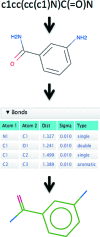
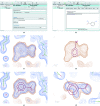

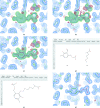
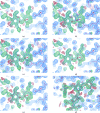
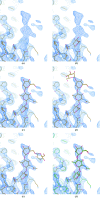
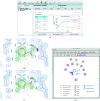
Similar articles
-
Tools for ligand validation in Coot.Acta Crystallogr D Struct Biol. 2017 Mar 1;73(Pt 3):203-210. doi: 10.1107/S2059798317003382. Epub 2017 Mar 6. Acta Crystallogr D Struct Biol. 2017. PMID: 28291755 Free PMC article.
-
AceDRG: a stereochemical description generator for ligands.Acta Crystallogr D Struct Biol. 2017 Feb 1;73(Pt 2):112-122. doi: 10.1107/S2059798317000067. Epub 2017 Feb 1. Acta Crystallogr D Struct Biol. 2017. PMID: 28177307 Free PMC article.
-
Modelling covalent linkages in CCP4.Acta Crystallogr D Struct Biol. 2021 Jun 1;77(Pt 6):712-726. doi: 10.1107/S2059798321001753. Epub 2021 May 19. Acta Crystallogr D Struct Biol. 2021. PMID: 34076587 Free PMC article.
-
Validation of Protein-Ligand Crystal Structure Models: Small Molecule and Peptide Ligands.Methods Mol Biol. 2017;1607:611-625. doi: 10.1007/978-1-4939-7000-1_25. Methods Mol Biol. 2017. PMID: 28573591 Review.
-
Keep it together: restraints in crystallographic refinement of macromolecule-ligand complexes.Acta Crystallogr D Struct Biol. 2017 Feb 1;73(Pt 2):93-102. doi: 10.1107/S2059798316017964. Epub 2017 Feb 1. Acta Crystallogr D Struct Biol. 2017. PMID: 28177305 Free PMC article. Review.
Cited by
-
The missing link: covalent linkages in structural models.Acta Crystallogr D Struct Biol. 2021 Jun 1;77(Pt 6):727-745. doi: 10.1107/S2059798321003934. Epub 2021 May 19. Acta Crystallogr D Struct Biol. 2021. PMID: 34076588 Free PMC article.
-
Reanalysis of a μ opioid receptor crystal structure reveals a covalent adduct with BU72.BMC Biol. 2023 Oct 10;21(1):213. doi: 10.1186/s12915-023-01689-w. BMC Biol. 2023. PMID: 37817141 Free PMC article.
-
Optimisation of Neuraminidase Expression for Use in Drug Discovery by Using HEK293-6E Cells.Viruses. 2021 Sep 22;13(10):1893. doi: 10.3390/v13101893. Viruses. 2021. PMID: 34696326 Free PMC article.
-
CMM-An enhanced platform for interactive validation of metal binding sites.Protein Sci. 2023 Jan;32(1):e4525. doi: 10.1002/pro.4525. Protein Sci. 2023. PMID: 36464767 Free PMC article.
-
The CCP4 suite: integrative software for macromolecular crystallography.Acta Crystallogr D Struct Biol. 2023 Jun 1;79(Pt 6):449-461. doi: 10.1107/S2059798323003595. Epub 2023 May 30. Acta Crystallogr D Struct Biol. 2023. PMID: 37259835 Free PMC article.
References
Publication types
MeSH terms
Substances
LinkOut - more resources
Full Text Sources
Other Literature Sources
Research Materials

